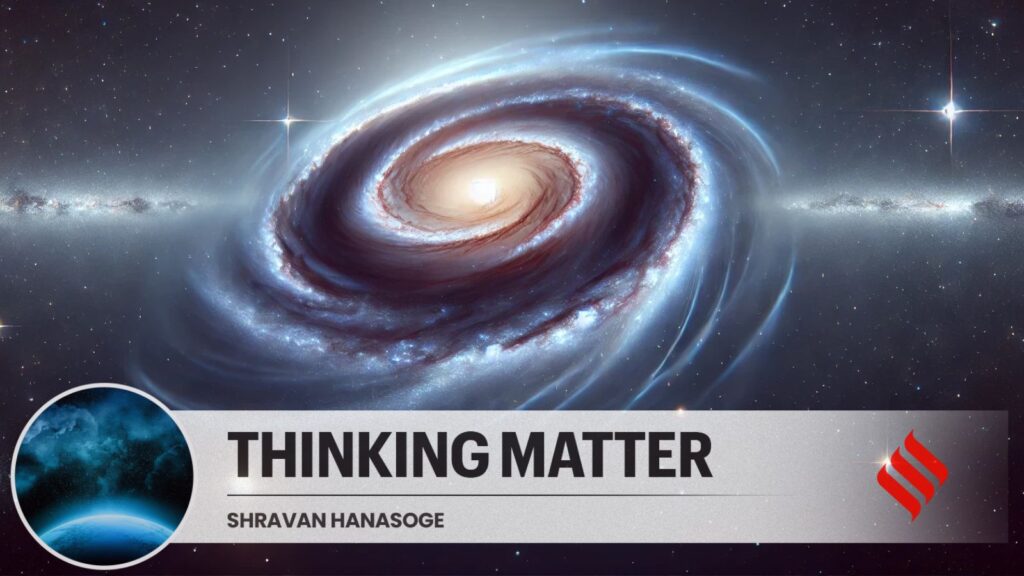In 1933, Swiss astrophysicist Fritz Zwicky was observing the Coma Cluster — a massive congregation of galaxies about 300 million light-years away — when he noticed something odd. The galaxies were swirling around each other far too fast. According to the visible matter in the cluster, they should have flown apart long ago. “There must be some missing mass,” Zwicky concluded. Matter that was invisible, yet exerted a gravitational pull strong enough to hold the cluster together. He called it “dunkle Materie,” or dark matter.
Nearly a century later, that missing matter still haunts modern physics. We now know that everything we can see — stars, planets, gas, dust — makes up only about 5% of the universe. Another 27% is this elusive dark matter, which neither emits nor absorbs light, making it undetectable by traditional telescopes. Yet without it, galaxies would not hold together, and the cosmic web that binds the universe would fall apart.
Holding the universe together
One of the most compelling clues to dark matter comes from the way galaxies move. Stars at the outer edges of spiral galaxies rotate much faster than expected — far too fast for the visible matter alone to account for. Without something unseen providing extra gravity, these galaxies should spin apart like leaves in a storm. Galaxy clusters, too, behave as if they are embedded in vast halos of invisible mass.
Dark matter, then, acts like the hidden scaffolding of the cosmos — an unseen framework on which galaxies, clusters, and cosmic filaments are built. This gravitational scaffold shaped the formation of structure in the early universe and continues to hold it all together today.
For a time, scientists hoped that neutrinos — extremely light, ghost-like particles that stream through the cosmos in unimaginable numbers — might be the missing glue. But although neutrinos do have mass, it’s now clear that they move too fast and don’t clump together the way dark matter must. Instead of forming scaffolding, they pass through matter like whispers, too fleeting to do the heavy lifting.
WIMP, supersymmetry: Yet no answer
The big question is: what is dark matter made of?
For years, physicists hoped it was a new kind of particle. One popular idea was the WIMP — the weakly interacting massive particle. These hypothetical particles wouldn’t interact with ordinary matter much, which is why we can’t see them, but they would have mass and gravity.
Story continues below this ad
To find them, physicists built sensitive detectors in deep underground labs — shielded from cosmic rays and background radiation. These detectors waited for the rare event when a WIMP might bump into an atom. But so far, no unmistakable signal has emerged. One reason is that dark matter seems to interact with the rest of the universe through gravity alone, and not via electromagnetic or nuclear forces, making it extraordinarily difficult to catch in the act.
As experiments continue to come up empty-handed, scientists are beginning to wonder whether our assumptions about the nature of dark matter might need to be revised—or whether it lies hidden in a realm we’ve yet to imagine.
Another promising theory came from supersymmetry, a grand idea that predicted a heavier “partner” for every known particle. Some of these partners, like the neutralino, seemed to be perfect dark matter candidates. But again, when the Large Hadron Collider turned on, these particles were nowhere to be found.
It’s now been decades, and dark matter still hasn’t shown its face. One by one, the most obvious possibilities are being ruled out. The more massive, easier-to-detect particles haven’t turned up. That’s pushing researchers to think beyond the standard playbook — maybe dark matter consists of incredibly light particles like axions, or exists in a hidden “dark sector” with its own forces.
Story continues below this ad
It’s also possible we’ve been asking the wrong question. Some radical theories propose that our understanding of gravity itself may be incomplete — and that there is no dark matter at all. But so far, these modified gravity theories can’t explain the full range of observations.
A cosmic mystery still unsolved
The stakes are high. Solving the dark matter puzzle could change how we understand matter, forces, and the origin of structure in the cosmos. It may open doors to new physics beyond the Standard Model — our current best theory of particles and forces.
But for now, dark matter remains a mystery. It doesn’t shine, it doesn’t collide, it doesn’t leave fingerprints. And yet its gravitational pull shapes the largest structures in the universe.
Perhaps the next generation of detectors will catch it. Perhaps the answer lies in a theory not yet imagined. Until then, we live in a universe where the majority of matter is invisible — felt, but not seen. As strange as that sounds, it may just be the universe’s way of reminding us that our understanding is still incomplete, and that the cosmos is larger — and darker — than we ever imagined.
Story continues below this ad
Shravan Hanasoge is an astrophysicist at the Tata Institute of Fundamental Research.


